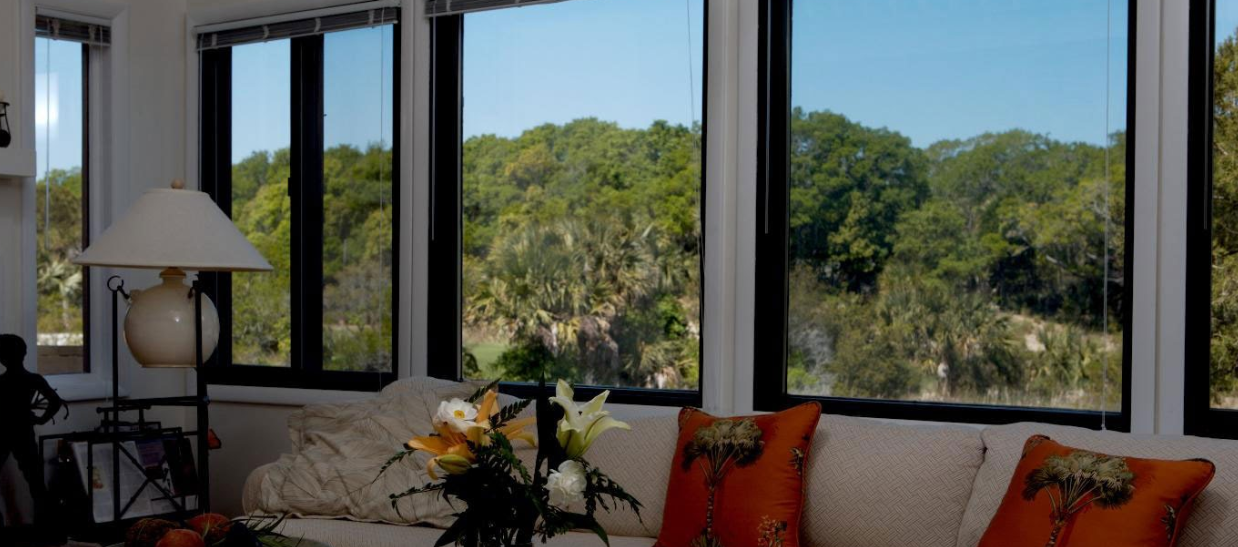How Long Does Window Film Last?

After a window film is installed, its lifespan will depend on a range of factors. On average, window tint film can last anywhere from 5 to 20 years. This guide will help you extend the lifetime of your home window tint and tell you when it’s time to replace it.
What Factors Affect Window Film Longevity?
How long does window film last? The answer to this question changes based on a broad range of factors. Learning about these factors can help you get the most out of the project. Once you know which issues affect residential window film longevity, you can make choices to protect your home window tinting.
The Quality of the Materials Used
The manufacturing process affects the quality of the film installed on your home windows. Unlike cheaper products, high-quality film uses a better dye that stands up to the sun’s UV rays for longer. This is one way the better-quality film resists bleaching and fading.
Additionally, the film manufacturing process involves infusing the film with metal deposits. The metal fragments assist in blocking the UV rays and help the film retain its color. Polyester with UV-resistant characteristics is also used in the manufacturing process.
Finally, the manufacturers of high-quality window film use a stronger adhesive. The quality of the adhesive used in installing residential window film will determine how long the tint lasts before it starts to erode.
The Local Climate
The average temperatures in your region will affect your residential window film’s longevity. In regions where extreme temperatures are more common, you should expect the window film to erode faster. This includes both extreme temperatures and extreme heat. Window tinting lasts longer on homes in areas that experience moderate temperatures all year round.
The sun’s effect on window film is another climate issue to consider. Along with UV rays, the higher heat direct sunlight produces will adversely affect your home window tint. Even higher-quality films will fade and lose their brilliance over time.
The Position of the Windows
You’ll notice that the film lasts longer on some windows than others. That’s because the position of the window plays a role in window films’ longevity. Overall, the film on the north and south-facing windows will last longer than the film on the east and west-facing windows.
An additional factor that could positively affect the lifespan of your residential window film is the presence of trees or buildings that cast shade on your home. And if you live in a coastal area, the salty air will deteriorate window film more rapidly on the side of the house facing the shore.
The Quality of the Installation Process
The quality of the installation company makes a significant difference in how long your home window tint will last. An experienced installer will have the skills and the correct equipment to install window film without leaving blemishes or bubbles. Before hiring installers, ask to see samples of their work.
An experienced installer will also be able to tell you if the condition of your windows might play a factor. Older windows may have deteriorated frames that let heat and air erode the film’s adhesive. Additionally, poor glass that has imperfections will affect the film’s lifespan since the adhesive may not bind well to uneven surfaces.
Signs It’s Time to Replace Your Window Tint Film

With the question of “How long does window film last?” now answered, you have the knowledge needed to extend the lifetime of your home window tint. However, no matter how well you maintain it, your tint will need replacing eventually.
When you know the signs that your existing window film has outlived its usefulness, you can prepare to have a new film installed. Doing so will renew the benefits and reasons for window tinting on your home windows.
Fading of the Tint Dye
Initially, you might find it challenging to recognize fading in your window film’s dye. Over time, the tint will usually take on a purplish discoloration as a result of the yellow dye fading faster. Red and blue dye colors last longer, so they will combine to create the purple hue you see.
Some high-quality film manufacturers match the faster fade time of yellow dye to the slower fade time of blue and red to reduce or eliminate the purple discoloration. Cheaper window films will turn purple much faster, and very low-end films will age within only a few months.
Bubbles in the Film
Your window film should be free of bubbles. If you see bubbles right after the installation, your installer probably used too much mounting solution. Otherwise, bubbles develop as heat and moisture seep past the adhesive and affect the underside of the film. Look for this sign that the adhesive is weakening as you’re cleaning your window film.
Cracking and Peeling of the Film
Windows facing the east or west will develop film cracking sooner since they face direct sunlight on a daily basis. The sun’s intensity will turn the film brittle, causing it to expand and crack. You might also see peeling around the edges and curling in the corners. Peeling and curling suggest that the adhesive is losing strength.
What if You Buy a Home With Old Film?
If you buy a resale home and notice that the windows already have film covering them, you might think you’re a step ahead. Keep in mind that the previous owner may have installed inferior window tinting. To determine the quality of the film and installation, contact a professional installer. They can tell you whether the film needs replacing.
What Are the Advantages of Hiring a Professional Installation Company?
Some people try to install window films themselves, thinking it’s an easy DIY project. However, unless you have the skills and proper tools to do the job correctly, it’s better to hire a professional installer. Professionally installed window film provides you with the following advantages:
Compliance With Warranty Terms
The most important reason to hire a professional installer is to comply with the window film manufacturer’s warranty terms. If the film turns out to have defects, you can save on the replacement costs if you’re able to show that a professional installed the film. Otherwise, you might have to pay to replace the film out of your own pocket.
Customized Window Film
When you work with a professional installer, they can help you customize your window film. Customization options range from choosing specific colors to images and designs for the film. These options give you the opportunity to create window tint that speaks to your interests or your unique sense of style.
Film That Offers the Full Range of Benefits
A poorly installed window film may have gaps around the edges or peel sooner than expected. This prevents you from taking full advantage of the energy efficiency, privacy, and security benefits of window film. A professional installer will provide a better-quality installation, ensuring that your film provides all the benefits needed to make investing in residential window film worthwhile.
Make Window Tint Your Next Home Investment
Once you’re ready to start looking for window film to tint your windows, you’ll want to prepare your windows for the installation process. While the installer will ensure each surface is clean, it can help to wash your windows ahead of time. Make sure to remove any obstacles near your windows as well. These steps will make it easier for your installer to give your windows a bold, new look.


